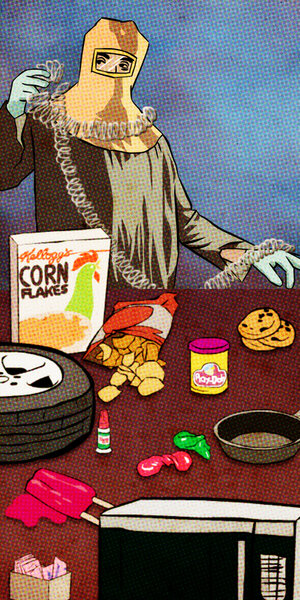Corn Flakes were created (by accident, of course) during a search for good, wholesome vegetarian food. William Kellogg and his brother, John Kellogg, are the masterminds behind one of the world’s most popular cold cereals.
In 1894, John was the chief medical officer of Battle Creek Sanitarium in Michigan, which was run based on Seventh-day Adventist health principles of a vegetarian diet. Will worked at the sanitarium as a bookkeeper and manager, but under the guidance of his brother, he became very interested in health and nutrition. He eventually helped John search for new, wholesome diets for patients. The two brothers were in search of an easily digestible bread substitute, which led them to boiling wheat to make dough.
But it never turned into dough. They let the wheat boil for far too long. When Will rolled out the wheat, it separated into large, flat flakes. After baking and tasting, the brothers decided it was a delicious, healthy snack worthy of their patients. “Granose” flakes received rave reviews and patients pleaded for more after they left the sanitarium.
While John started the shipment process, Will had an idea: Try the process with corn instead of wheat. It was a touch-down play. In 1906 alone, the Kelloggs’ company, Battle Creek Toasted Corn Flakes Company, shipped 175,000 cases of Corn Flakes, according to the Massachusetts Institute of Technology.
The brothers experimented with more ingredients, creating Bran Flakes and Rice Krispies. After Will decided to add sugar to some recipes, John left the company, believing that it went against their initial goals. Will renamed the company W.K. Kellogg Company in 1922.





